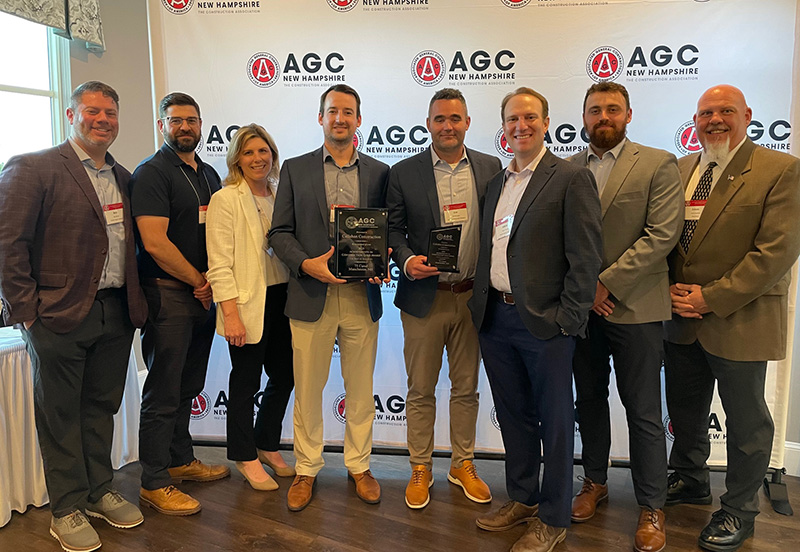News: Construction Design & Engineering
Posted: May 15, 2014
Considerations for landlords with tenant lease structures
The lease agreement is in many ways the foundation of the landlord-tenant relationship. It outlines the responsibilities and rights of each party, addressing liabilities and tax issues that may arise. A clear lease agreement can facilitate good communication between tenants and landlords by providing a clear framework for the resolution of issues. At the same time, a well thought out lease can be helpful to both parties when filing taxes and performing annual accounting. Below, we'll explore some key considerations for landlords with tenant lease structures.
Tax Issues
Often, alterations must be made to commercial real estate before the property is ready for use by the tenant. In such a situation, both parties must come to an agreement on the extent of the landlord's financial investment in the improvements, as well as the landlord's degree of control over the nature of the improvements.
Landlords and tenants may negotiate a tenant improvement allowance, which is an allowance provided by the landlord for the tenant to make improvements. Alternatively, the landlord may take total control or the tenant may be completely responsible. If a tenant improvement allowance is provided, it's important to structure the lease so that the tenant does not have to recognize income for the allowance in the year that the allowance is received.
Improvements on the property come with the problem of determining who owns them. If the developer owns the improvements, it can have unfavorable tax implications. Under the current Modified Accelerated Cost Recovery System (MACRS), a 39 year amortization of improvements is possible. This is a lengthy recovery period that can be quite detrimental from a tax perspective, since income is recognized over the term of the lease, while expense is recognized over 39 years. This mismatch can carry a significant tax cost.
When deciding who will own the improvements, it's important to consider who the tenant is. A not-for-profit tenant would have no reason to avoid ownership of improvements, since long-term depreciation is not detrimental to them. At the same time, the landlord may get to write off the improvement allowance as an inducement payment over the life of the lease, which is almost always more advantageous than the 39 year write-off available if the landlord owned the improvements. Thus, a mutually beneficial agreement can emerge.
Benefits of Percentage Rent Structure
From an accounting perspective, percentage rents is an option to keep in mind when structuring lease agreements. With a percentage rent structure, the tenant pays a portion of their monthly profits to the landlord, in addition to the flat rental rate.
If a percentage rent is used, reporting requirements should be built into the lease, so that the tenant's obligation to report is well-established. In addition, a "right to audit" can be written into the lease, so that the landlord has the right to hire an independent auditor to determine whether the reported percentage rent is congruent with the business's actual earnings. This type of an audit is usually paid for by the landlord, unless they discover reporting discrepancies above a certain threshold, in which case the tenant would have to pay for the audit.
Most percentage rent lease issues stem from a trust issue - the tenant may not be honest about their sales reporting. Therefore, the issue should be addressed on a personal level as well as on paper. To prevent trust issues from developing, it's important for the landlord to build a relationship with a tenant, providing ample opportunities for both parties to express their concerns.
Key Takeaways
With all of this in mind, be sure to take the following into account when designing tenant lease agreements:
* Structure a lease so that the tenant doesn't have to report the allowance as income
* The lease should outline who owns the improvements made to the property, considering the tax costs to each party
* Not-for-profit businesses have no reason to avoid owning property improvements, producing a mutually beneficial agreement
* If a percentage rent structure is used, reporting requirements and right to audit should be built into the lease
Because of the complex issues that should be considered when deciding on a tenant lease structure, and the potential tax consequences associated with certain agreements, it's important to consult a skilled lease attorney and accountant before signing an agreement.
William Jenczyk, CPA, is a principal in the real estate group at DiCicco, Gulman & Company LLP in Woburn, Mass.
MORE FROM Construction Design & Engineering
Nobis Group awards Robinson and Moreira STEM scholarships
Concord, NH Nobis Group, a 100% employee-owned consulting firm specializing in engineering and environmental solutions across the Northeast, has named the recipients of its 2025 STEM Scholarship: Andie Moreira of

Columns and Thought Leadership

Ask the Electrician: Is summer a prime time for commercial electrical maintenance?
The answer is “Yes!” While January marks the official new year, many businesses view September as a fresh start. This makes summer an ideal time for commercial property owners to schedule long-term electrical maintenance projects.

The design-build advantage: Integrated interior design solutions - by Parker Snyder
When it comes to corporate interior spaces for both commercial and industrial projects, partnering with a design-build firm with in-house interior design services can offer clients many benefits. Unlike traditional delivery methods where interior designers operate independently from the design and construction teams, often creating a longer project timeline as cost negotiations and revisions ensue

The rise of incubators and co-working spaces: The latest in life sciences - by Matt Combs
In recent years, the life science industry has witnessed a shift in how companies operate and innovate. One of the key driving forces behind this transformation is the emergence of incubators and co-working spaces specifically tailored to meet the unique budget and schedule needs of startups.

Careers in Construction Month focus on training and safety - by Joe Camilo
October is Careers in Construction Month, and rarely has it been more consequential. According to our chapter’s national parent organization, the construction industry needs to attract half-a-million new workers in the coming year to meet demand. Addressing that need is a huge job, but we at ABC MA are trying to do our part.







.png)